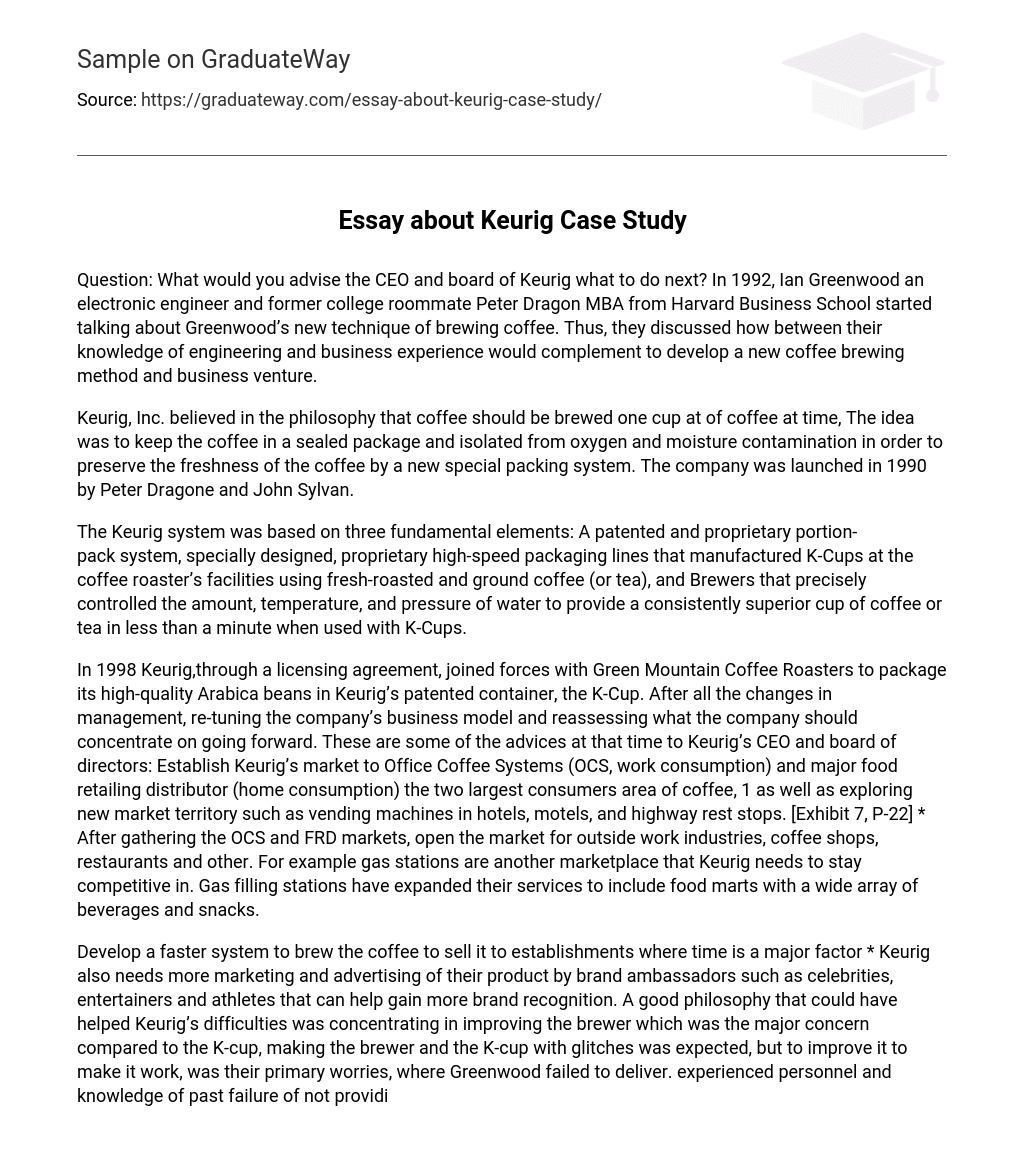What advice would you give to the CEO and board of Keurig concerning their next course of action?
Ian Greenwood, an electronic engineer, and Peter Dragon, his former college roommate with an MBA from Harvard Business School, engaged in a discussion in 1992 regarding Greenwood’s groundbreaking coffee brewing method. They realized the opportunity to merge their engineering and business knowledge to create a fresh approach to coffee brewing and kickstart a business endeavor.
Keurig, Inc. was established in 1990 by Peter Dragone and John Sylvan with the belief that coffee should be brewed individually per cup. The company aimed to maintain the coffee’s freshness by employing a unique packing system that ensured it remained sealed and protected from oxygen and moisture contaminants.
The Keurig system consists of three essential elements: a patented and exclusive portion-pack system, specially designed high-speed packaging lines, and brewers that carefully control the amount, temperature, and pressure of water. The portion-pack system involves using freshly roasted and ground coffee or tea to create K-Cups at the coffee roaster’s facilities. When used with K-Cups, the brewers consistently produce a great cup of coffee or tea in just one minute.
In 1998, Keurig partnered with Green Mountain Coffee Roasters to package Arabica beans in their patented K-Cup container. Following changes in management and reevaluating their business model, advice was given to Keurig’s CEO and board of directors. This advice included targeting the Office Coffee Systems (OCS) and major food retailing distributors (home consumption) markets, the two largest consumer areas for coffee. Additionally, it was recommended to explore new market territories like vending machines in hotels, motels, and highway rest stops. After establishing the OCS and FRD markets, expanding into coffee shops and restaurants was suggested. Keurig also needs to stay competitive in the gas station marketplace as they now offer food marts with a variety of beverages and snacks.
To increase sales to time-sensitive establishments, Keurig should develop a faster brewing system. In addition, employing brand ambassadors like celebrities, entertainers, and athletes could enhance product recognition through increased marketing and advertising efforts. Keurig’s focus should have been on improving the brewer, which was its main concern compared to the K-cup. While encountering glitches in the brewer and K-cup was expected, ensuring their functionality was Keurig’s primary concern. Unfortunately, Greenwood failed to deliver due to a lack of experienced personnel and knowledge of past delays in delivering brewers on time.
In 2006, Keurig’s luck turned around when Green Mountain Coffee Roasters acquired Keurig Inc. and made it a wholly-owned subsidiary. As of 2010, Keurig asserts its strong market presence in North America, with 2.5 million beverages dispensed per day, 200,000 office installations, and a 6% share of all office-brewed coffee in the USA.





